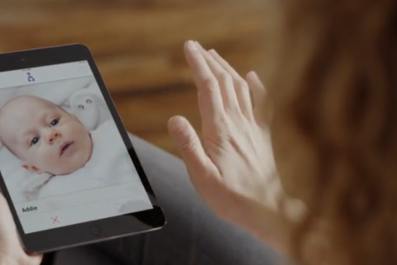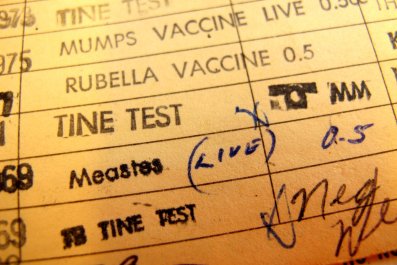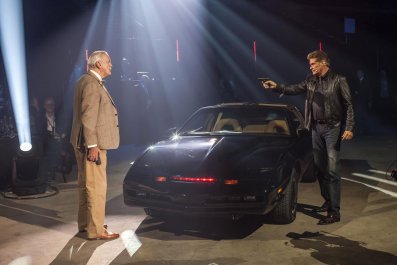Can Mario, Donkey Kong and Link collect enough power-ups to save Nintendo from going the way of Sega in the competitive, $91 billion video game industry? That's what's at stake this spring as Nintendo launches Switch, its first new console in five years.
Nintendo has been on the brink of "Game Over" before. Many analysts were writing Nintendo's ending after its 2001 GameCube failed to find an audience, but the company launched Wii in 2006 and revolutionized gaming with motion-controlled play that got gamers off their couches. But after failing to support its 2012 Wii U with a steady stream of games featuring iconic characters like Link, Wario and Yoshi, Nintendo once again finds itself with just one life left.
Nintendo is hitting the "reset" button by introducing a brand-new system: Nintendo Switch, which hits retail shelves on March 3. The $300 device is a hybrid portable tablet that docks into any TV via an HDMI cable to recharge and play games on the big screen. Take the Switch tablet out of the dock and the gaming can continue on the road. One charge lasts from three to six hours, depending on the game.
Switch also introduces tiny Joy-Con controllers that connect to the left and right sides of the main tablet for multiplayer gaming and can be disconnected to fit in each hand for motion-sensor gameplay similar to the original Wii remote controllers. For example, in the arcade boxing game ARMS, each controller replicates the motion of your left and right hands as you fight an opponent with super-stretching arms. These controllers are also put to creative use in the 1-2-Switch game (this generation's answer to Wii Sports ), which offers more than two dozen party games, including Table Tennis. The interesting thing about this mini-game, and many in this collection, is that it takes the "video" out of video game. Two players compete across an invisible pingpong table using sound cues and a built-in HD rumble vibration feature to know when to slap an invisible ball back and forth.
'New Way to Play'
Reggie Fils-Aime, president and CEO of Nintendo of America, explains, "The TV screen can 'talk to you' to direct the action…keep score…and let you know the winner…. Only people not playing can see what's unfolding on screen. Who's winning? Who's behind? Their sense of involvement is increased, because they know they're seeing things even the players aren't. In short, in a collaborative sense, this is a new way to play."
Nintendo is targeting its large community of "fan boys" and "fan girls" with its initial global allotment of 2 million Switch consoles (half of which are expected to be available in the U.S.), but it's offering games like Snipperclips to encourage more interactions with family members and older gamers. That game lets up to four players control 2-D shapes that can be arranged in different combinations to solve puzzles. Several of the early Switch games, including Just Dance 2017, ARMS and Steep, go against the sedentary nature of gaming and get players moving around the room—something the Wii introduced back in 2006.
Nintendo finally has game-makers excited again. Over 60 publishers and developers are working on 100 games for the new platform—some for the first time. Josh Taub, senior vice president of Skylanders product management at Activision Publishing, says the flexibility of the Nintendo Switch hardware allows developers to contemplate both an in-living-room and on-the-go experience. "In this way, kids can have the same great experience at home as they do in the back seat of Mom's car or on an airplane," he says.
Developer support is crucial for Nintendo. The company has struggled in the console market, selling only 13.5 million of the now-discontinued Wii U system after dominating the industry by selling more than 101 million Wii devices. Nintendo made numerous mistakes with the Wii U, which was priced higher than the Wii and delivered inferior graphics compared with rival Sony's PlayStation 4 and Microsoft's Xbox One. It also lacked third-party support from developers, which exacerbated the barren-software issues that plagued the console from launch.
Gamestop has seen demand for Switch preorders surpass those of Wii U, according to Eric Bright, senior director of merchandising at the global specialty retailer. "A lot of our customers are ordering multiple games with the console, especially The Legend of Zelda," he says.
Cross-generational Appeal?
Nintendo has always had a two-pronged approach to gaming and has dominated the portable market since the introduction of the Game Boy in 1989. The game maker continues to deliver best-selling titles like Pokémon Sun and Pokémon Moon for its Nintendo 3DS and Nintendo 2DS, which sold 14.69 million copies in just 44 days last year. Those games helped 3DS become the best-selling gaming hardware of 2016, bringing the lifetime total to over 60.5 million units sold.
And after ignoring the global smartphone and tablet market for years, Nintendo last year had a series of blockbuster launches through its partnership with Japanese mobile giant DeNA, which takes popular Nintendo characters and creates games exclusively for mobile devices. More than 90 million gamers downloaded Super Mario Run on Apple devices. That game heads to Android in March. Nintendo, which owns one-third of the Pokémon Co., also gets a cut of Pokémon GO sales, which totaled $10.2 million on its first day. It has grossed over $1 billion in revenue to date.
Switch is all but guaranteed to be the hottest toy this spring, and Nintendo is hoping it will rekindle that cross-generational video game magic Wii conjured up. 1-2-Switch has the ability to lure in grandparents, except this time kids can bring the console to their house. The Wii had a 10-year shelf life that inspired developers to create new types of games and breathe new life into the entire industry. Of course, a lot has changed since 2006, but there are more people playing games today than ever—thanks to casual and free-to-play games across all platforms. Nintendo still owns a powerful collection of characters, and with Switch they're all gearing up for new adventures.





















